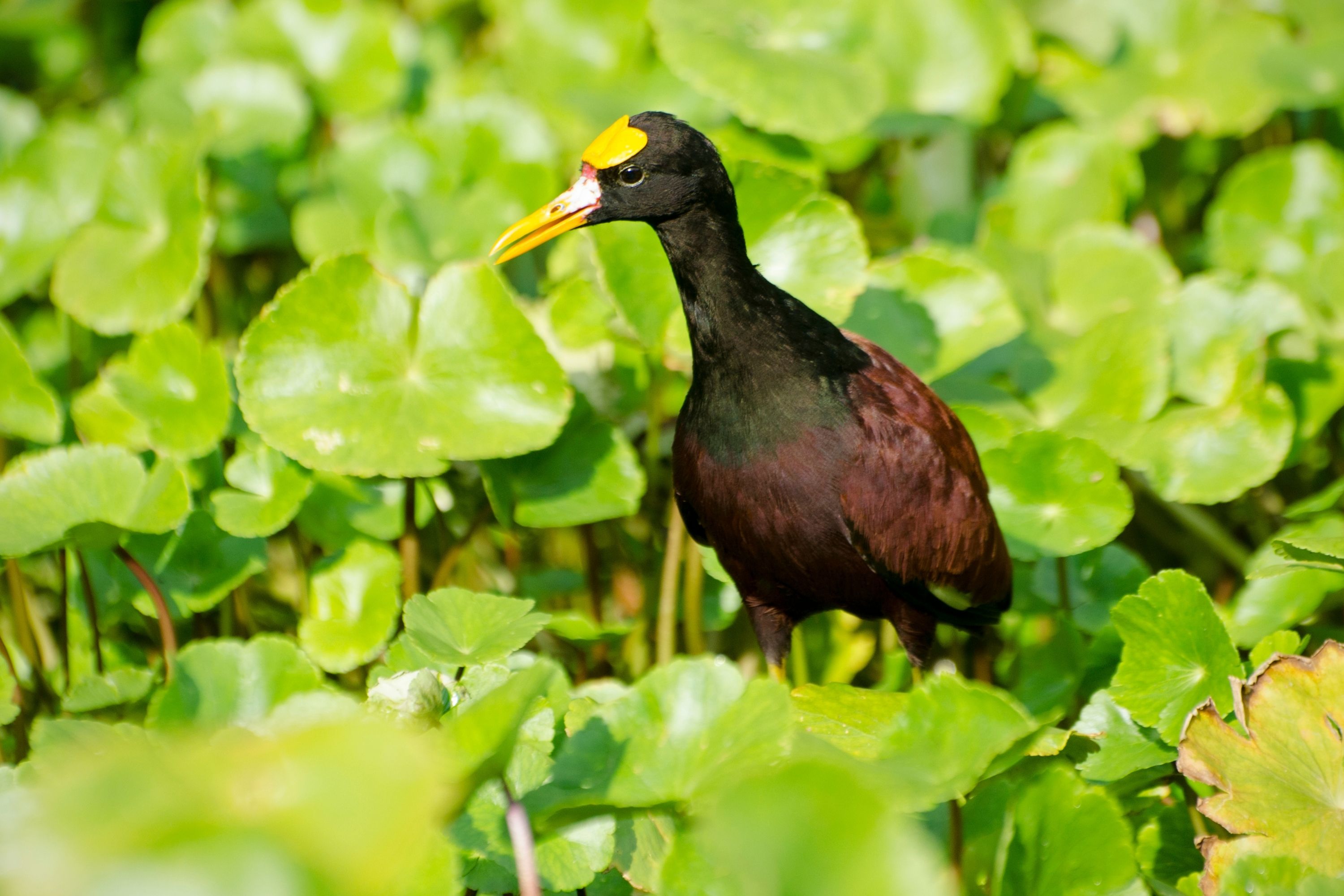Northern jacana
(Jacana spinosa)

Description
The northern jacana or northern jaçana (Jacana spinosa) is a wader which is known as a resident breeder from coastal Mexico to western Panama, and on Cuba, Jamaica and Hispaniola in the Caribbean. It sometimes known to breed in Texas, United States, and has also been recorded on several occasions as a vagrant in Arizona. The jacanas are a group of wetland birds, which are identifiable by their huge feet and claws, which enable them to walk on floating vegetation in the shallow lakes that are their preferred habitat. In Jamaica, this bird is also known as the 'Jesus bird', as it appears to walk on water. Jacana is Linnæus' scientific Latin spelling of the Brazilian Portuguese jaçanã, pronounced, from the Tupi name of the bird. See jacana for pronunciations. The northern jacana has a dark brown body with a black head and neck. In addition its bill has yellow patches and its forehead has a yellow wattle. Its bill has a white base. When a jacana is in flight, its yellowish-green primary and secondary feathers are visible. Also visible are yellow bony spurs on the leading edge of the wings, which it can use to defend itself and its young. The greenish colour of the wing feathers is produced by a pigment, rather rare in birds, called zooprasinin, a copper containing organic compound. Juveniles have a white supercilium and white lores. The female jacana is around twice as big as the male, averaging 145.4 g (5.13 oz) compared to 86.9 g (3.07 oz). Jacanas average 241 mm (8 inches) in length with a wingspan averaging 508 mm (20 inches). Young jacana chicks are covered in down and have patterns of orange, browns, black and some white on them. Older chicks are gray and have brownish upper parts. The northern jacana feeds on insects on the surface of vegetation and ovules of water lilies. It also consumes snails, worms, small crabs, fish, mollusks, and seeds. The jacana competes with birds of a similar diet like the sora. The northern jacana is unusual among birds in having a polyandrous society. A female jacana lives in a territory that encompasses the territories of 1–4 males. A male forms a pair bond with a female who will keep other females out of his territory. Pair bonds between the female and her males remain throughout the year, even outside of breeding. These relationships last until a male or female is replaced.
Taxonomic tree:







